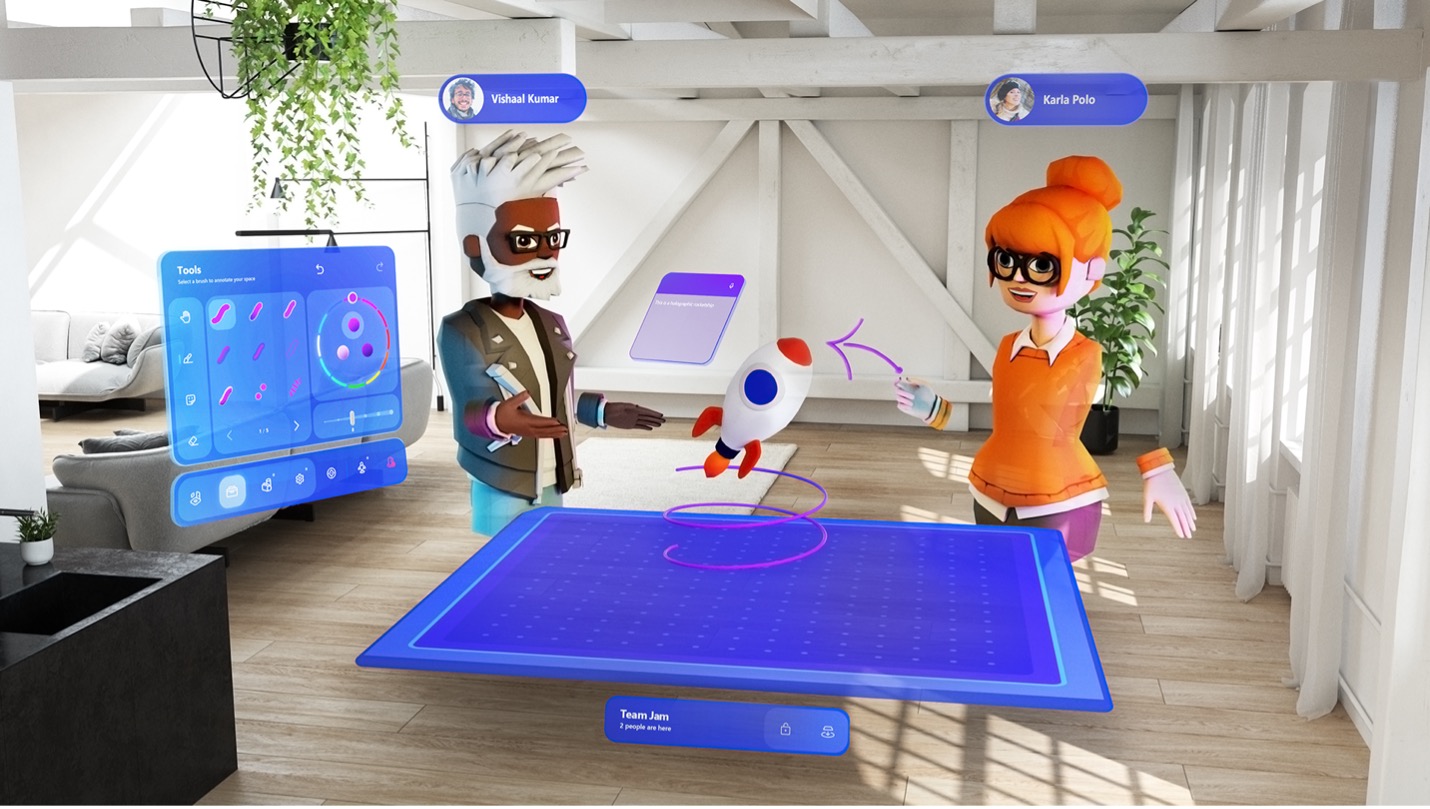Microsoft Mesh
Microsoft Mesh provides users with meeting space in different AR / VR spaces, enables interaction with other users and 3D content, while handling all the complex technical parts of sharing multi-user spatial experiences over the web. The main feature and goal of this application is collaboration in a virtual and mixed space - a combination of AR / VR - XR.
Within Microsoft Mesh, companies will be able to create and access applications that allow collaboration on holographic or 3D projects in real time. You can share ideas with team members across half the globe, and sensors can track your movements so you can interact with digital content as if you were working with it in real life. Other key features of this system include animated avatars, modelled to reflect as realistically as possible in the real world, interactive teleconferencing meetings, where much of the functionality is planned for use by the already well-known Microsoft Team commercial platform, application integration where have users be able to use most Microsoft applications as well as other third-party applications during the meeting.
The great advantage of this system is that it can be run on a wide range of devices from AR devices - HoloLens 2 via VR devices - HP Reverb G2 or Oculus Quest 2 to smartphones and tablets with iOS and Android operating systems.
To support a huge number of system functions, there is also a significant part of the hardware load, where the application may not behave smoothly in several tasks (e.g. in detailed modelling).
- You can create really any avatars
- A very specific room can be easily created through the Unity SDK
- Microsoft Mesh supports Full-body tracking, so it doesn't have a "flying polka body"
- Weak support for detailed face and eye tracking, even though it can track full body movement
